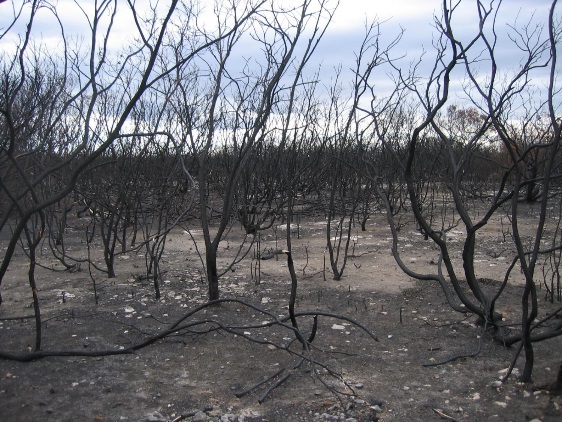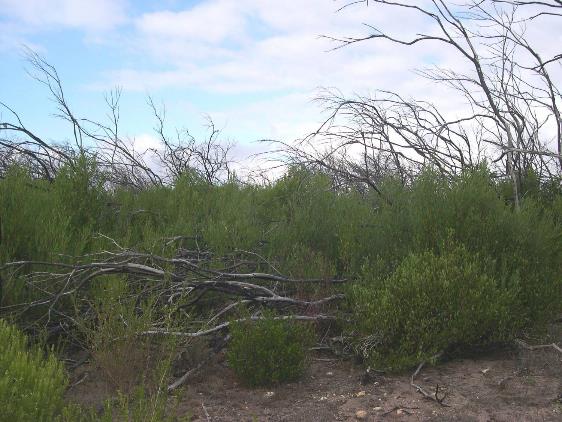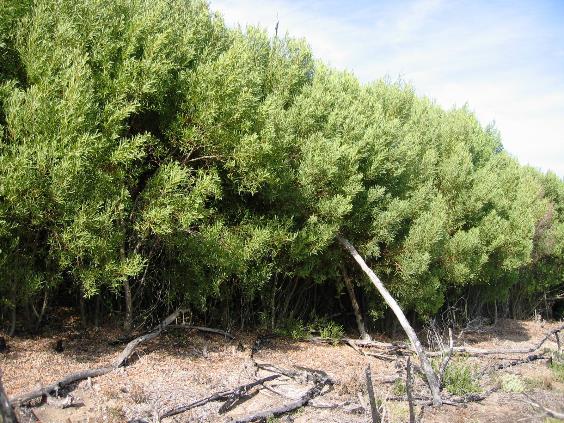Biological control of invasive Australian Acacia species - Annual monitoring of seed banks, 20-21 December 2016

Carien Kleinjan and Fiona Impson, have recently returned from a brief trip to the “DENEL - Overberg Test Range” in the vicinity of De Hoop Nature Reserve. The “invasive Australian Acacia team” have been conducting research in the area since 2003. A principal focus has been long term evaluation of the seed-bank dynamics of Rooikrans (Acacia cyclops), under different ecological scenarios such as the density of invasion coupled with the impacts of fire events and fire intensity. Ultimately, the goal is to shed light on the role that seed-reducing biological control agents are playing in seed-bank dynamics.
Prior to biological control, seed banks within A. cyclops infestations ranged between 2000 and 10 000 seeds per m2. Subsequent to the introduction of two biological control agents - a beetle that eats the seeds and a fly that prevents the production of pods - accumulation of seed banks after fire events has been dramatically reduced making management of this species more tractable (see images below).

|
An Acacia cyclops infestation that succumbed during an intense fire 14 years ago.
|

|
Two years later no seed remains in the soil, all are scorched or have germinated. As plants mature (from 4 years) seed starts to accumulate but the rate is slowed by the activities of the biological control agents. |

|
14 years later a dense thicket has replaced the original population. BUT there is < 1 seed/m2 in the soil. Recovery of the thicket after a subsequent fire event is unlikely. |
~ Article supplied by Carien Kleinjan & images supplied by John Hoffmann
